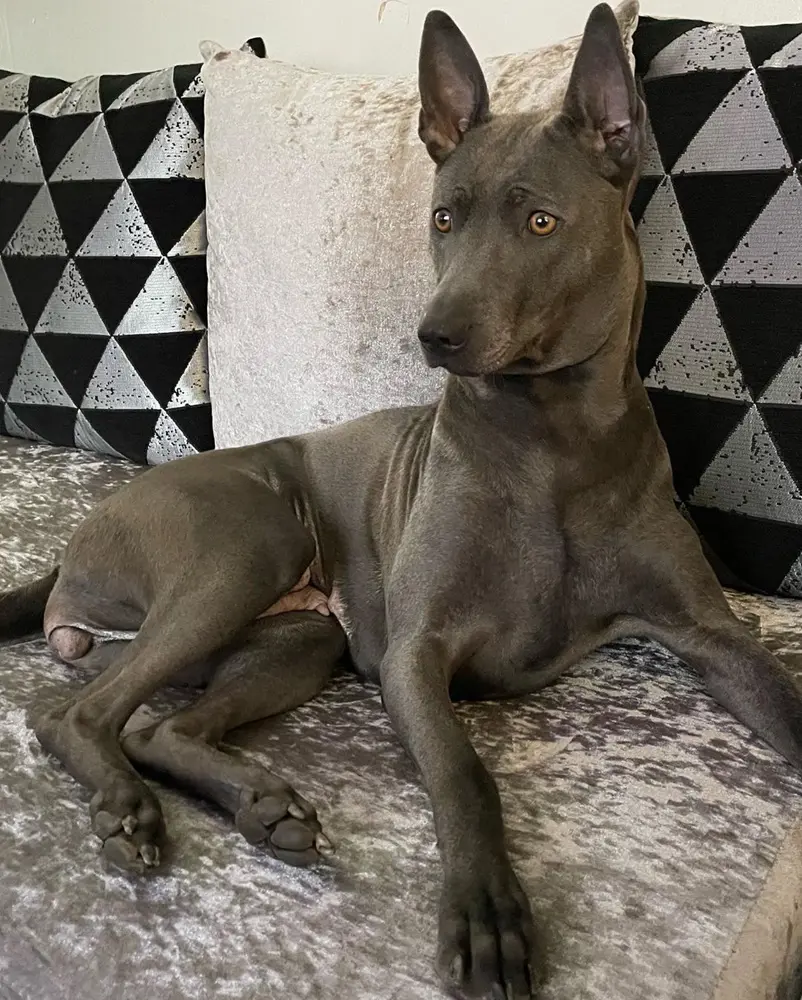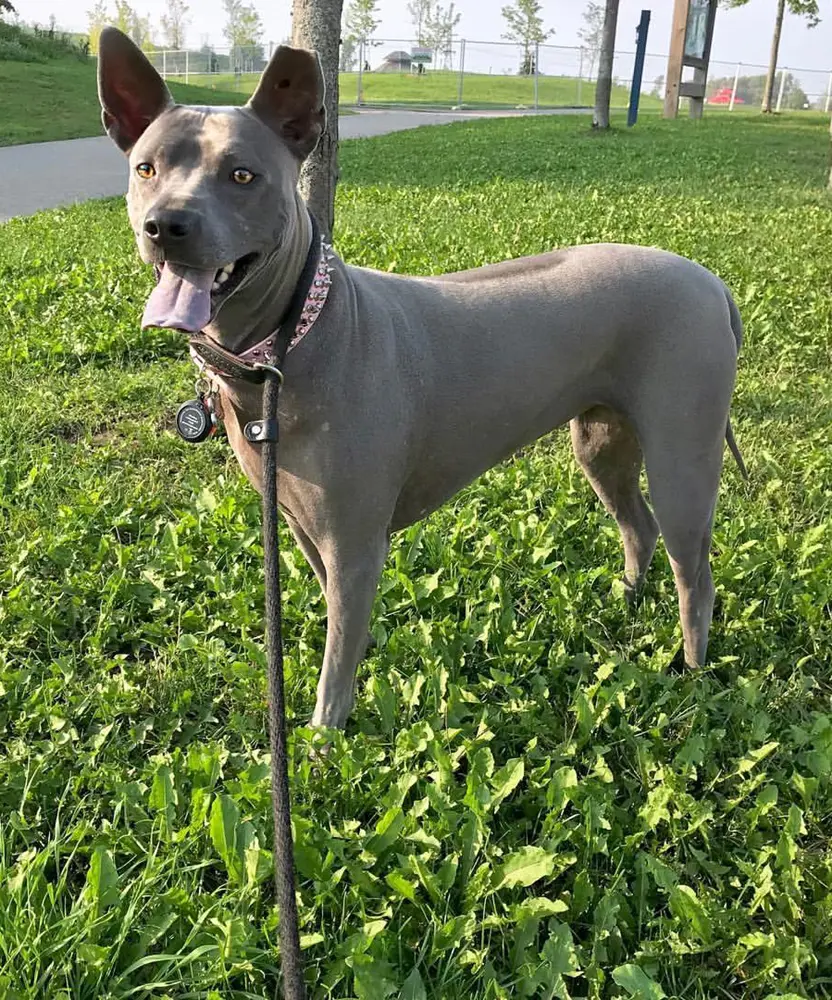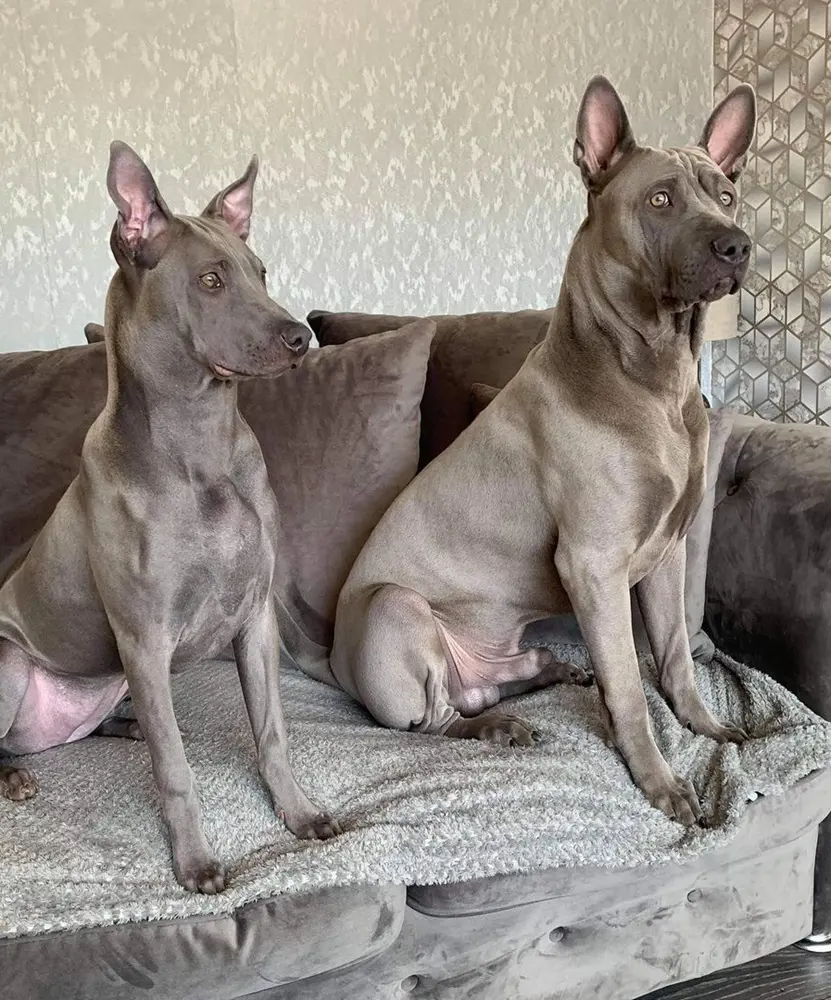Thai Ridgeback Dog Breed Profile and Care

If you value a loyal, protective, and intelligent companion, consider getting a Thai Ridgeback. Known for their unique appearance, these dogs are perfect for active individuals or families due to their high energy and agility.
Before adopting a Thai Ridgeback puppy, get to know them better. This comprehensive guide will help you learn everything a dog owner must know.
Origin And History
A rare and ancient breed, the Thai Ridgeback originated in Thailand over 400 years ago. It is believed to have developed naturally in the eastern part of Thailand, particularly in the provinces of Chanthaburi and Trat. The breed's ancestors likely included indigenous Thai dogs, which adapted to the harsh, isolated environment. Natural selection led to the emergence of the Thai Ridgeback's distinctive ridge of hair along its back.
Originally, Thai Ridgebacks were bred as hunting dogs for their ability to take down game such as wild boar and deer. They were also used for guarding homes and protecting livestock due to their keen senses and fierce loyalty. The breed remained relatively unknown outside Thailand until the 20th century when it began gaining recognition as a companion animal.
Thai Ridgeback Characteristics

- Height: 20 to 24 inches (50 to 61 cm)
- Weight: 35 to 75 pounds (16 to 34 kg)
- Average Lifespan: 12 to 15 years
- Coat Colors: Red, Black, Blue, Fawn
Thai Ridgeback is not technically a single breed. Instead, it consists of three dog families that possess similar traits, including the ridge.
The medium-sized dog boasts some distinct physical and behavioral traits, often uncommon in the canine world. Here are some primary characteristics of the Thai Ridgeback that make it a unique breed.
Distinctive Ridge
The Thai breed's most defining feature is the ridge of hair running along its back in the opposite direction from the rest of the coat. It can vary in size and shape, with some forming crowns or whorls at either end.
The ridge is a result of a genetic mutation that this pooch shares with the Rhodesian Ridgeback, suggesting a possible ancient connection between the two breeds. This feature is not just cosmetic; it is also linked to the dog's heritage.
Muscular Build
Ridgebacks have a strong, athletic build that reflects their origins as hunting and guard dogs. They are medium-sized, typically weighing between 35 to 75 pounds, with well-defined muscles, particularly in the shoulders, legs, and back.
This muscularity gives them the power and endurance needed for the demanding tasks they were historically bred for, such as hunting wild boar and other large game. Their physical strength is also complemented by their agility, making them versatile and effective working dogs.
Erect Ears
Featuring large, triangular, and upright ears, these pups have a naturally alert and intelligent appearance. These erect ears are not just aesthetic but also functional, allowing the dog to better detect sounds in its environment, crucial for hunting and guarding.
The shape and position of the ears are consistent with the breed's need for heightened sensory perception, which is vital in its traditional roles. They also enhance the dog’s expressive range, as they move in response to the dog's emotions and surroundings.
Loyal and Protective
Bred to guard homes and livestock, they are naturally wary of strangers and quick to defend their family if they sense a threat. This loyalty extends to being highly attuned to their owner’s needs and emotions, often forming strong bonds.
While this makes them excellent guard dogs, it also means they require proper socialization from an early age to prevent overly aggressive or territorial behavior toward unfamiliar people or animals.
Intelligent and Independent
Thai Ridgeback dog breeds are highly intelligent and capable of learning commands and tasks quickly. However, they also possess a strong independent streak, which can make training challenging. The behavior comes from their history as hunting dogs that needed to make decisions in the field without constant human guidance.
Without proper training and mental stimulation, their intelligence can lead to stubborn or willful behavior.
High Energy
Thai Ridgebacks are a highly energetic breed that requires regular exercise to stay healthy and happy. They are not suited for sedentary lifestyles and need ample space to run and play.
Daily activities such as long walks, runs, or engaging in dog sports like agility can help meet their exercise needs. Without sufficient physical activity, they may get bored and even show destructive behaviors. Consider adopting a Ridgeback only if you maintain a fairly active life; they may not be the best pet option for couch dwellers.
Agility and Speed
Built for quick movements, these canines possess lean muscular bodies that are perfect for pursuing and capturing fast-moving game like deer and wild boar. Their speed is complemented by their ability to navigate rough terrain with ease, thanks to their strong, well-balanced frame and keen sense of direction.
Training
Thai Ridgebacks are intelligent but independent, meaning they are moderately trainable. Training should begin early, around 8 weeks old, when puppies are most receptive to learning. Start with basic commands like "sit," "stay," "come," and "down."
Use positive reinforcement, such as treats and praise, to encourage desired behavior. Consistency and patience are key as these pups can be stubborn and may need time to fully grasp commands.
As they master basic commands, gradually introduce more complex tasks, like leash walking, recall, and "leave it." Thai Ridgebacks can learn advanced tricks, such as fetching specific items, rolling over, or playing dead. These dogs can understand up to 165 words or phrases with proper training and motivation.
Grooming A Thai Ridgeback

Despite their short coat, routine grooming is a vital part of their care routine. These dogs should be groomed approximately once a week to maintain their skin and coat health, remove loose hair, and monitor for any skin issues.
How To Groom A Thai Ridgeback?
1. Brushing
Use a soft-bristle brush or a grooming mitt to gently brush in the direction of hair growth. This process helps remove loose hairs, dirt, and debris and distributes natural oils.
While they shed minimally, regular brushing reduces the amount of hair shed around the house. Brushing also offers an opportunity to check for skin irritations, parasites, or any other abnormalities. For the best results, make brushing a calm and rewarding experience for the dog.
2. Bathing
Bathe your pet every 6 to 8 weeks or as necessary. Use a mild, dog-specific shampoo to avoid stripping the coat of its natural oils.
Start by thoroughly wetting the coat with lukewarm water, then apply shampoo and work it into a lather. Be careful around the eyes and ears. Then, rinse thoroughly until no residue is left behind.
After bathing, towel-dry the dog and allow them to air dry in a warm, draft-free area. Overbathing should be avoided to prevent skin dryness.
3. Ear Cleaning
Due to their erect ears, Thai Ridgebacks are prone to earwax buildup and infections. Clean their ears every 2 to 4 weeks using a vet-recommended ear cleaner.
Gently lift the ear flap and apply the cleaner according to the instructions. Massage the base of the ear to help the cleaner reach deep into the ear canal. Use a cotton ball or soft cloth to wipe away any debris or wax, but never insert anything into the ear canal itself.
4) Nail Trimming
Clip your dog's nails every 3 to 4 weeks. Routine trimming in necessary to prevent overgrowth, which can cause discomfort or difficulty walking.
Use a dog-specific nail clipper, and trim just the tip of each nail. Avoid the quick - a sensitive area that contains blood vessels and nerves. If unsure, trim only a small amount at a time, or consult a professional groomer. If the dog is resistant to nail trimming, start slowly and reward them with treats to make the experience positive.
5. Dental Care
Thai Ridgebacks are prone to tartar buildup and gum disease. Brush their teeth 2 to 3 times a week using a dog-specific toothbrush and toothpaste.
Regular brushing helps prevent bad breath, tooth decay, and other dental issues. Additionally, provide dental chews and consider annual professional cleanings to maintain oral health. Establishing a dental care routine from a young age can help the dog become more comfortable with the process.
Veterinary Care
Plan routine checkups, every six months to a year, to monitor your canine pal's health. During these visits, vets perform physical exams, including checking the heart, lungs, teeth, skin, and eyes. Blood tests and fecal exams may be conducted to detect any underlying issues, such as infections or parasites.
Vaccinations are crucial for preventing common canine diseases. Thai Ridgebacks should receive core vaccines, including rabies, distemper, parvovirus, and adenovirus, starting as puppies and continuing with booster shots throughout their lives. Depending on lifestyle and regional risks, additional vaccines, such as those for Lyme disease or leptospirosis, may be recommended.
The Thai dogs are generally healthy but can be prone to conditions like hip dysplasia and dermoid sinus. Early detection through regular screenings, X-rays, or genetic testing can help manage or treat these issues before they become severe, ensuring the dog’s well-being.
Gestation Period And Litter Size

Ridgebacks normally give birth to young puppies after 63 days of conception (or 9 weeks). The average litter size ranges from 5 to 10 puppies, although this can vary depending on the individual dog and factors such as age and health.
An expectant puppy mama needs a healthy diet and a stress-free environment. During pregnancy, a Ridgeback’s food intake should be gradually increased, especially in the later stages. Focus on high-quality, protein-rich food to support the growing puppies. Additionally, supplements like calcium and omega-3 fatty acids can also be beneficial.
Thailand Ridgeback Puppies
Thai Ridgeback puppies, like all dogs, are born blind and with their ears closed. At birth, they are small and delicate, typically weighing between 10 to 14 ounces. Their coats are smooth and short, and they often have the distinctive ridge along their back even as newborns.
Initially, they rely on their sense of smell and touch to find their mother and nurse, as their eyes and ears start to open after 10 to 14 days. They begin to eat solid food around 3 to 4 weeks old, transitioning from mother’s milk to soft, protein-rich foods like wet puppy food or softened kibble.
As they grow, they require a balanced diet rich in protein, fats, vitamins, and minerals to support their rapid development into strong, healthy adult dogs.
Diet & Feeding Routine
An adult Thai Ridgeback requires a balanced diet rich in protein, healthy fats, vitamins, and minerals to maintain their muscular build and high energy levels. Their diet should primarily consist of high-quality dog food, either commercial or home-prepared, that lists meat as the first ingredient. Protein sources like chicken, beef, or fish are essential for muscle maintenance, while healthy fats from fish oil or flaxseed support skin and coat health.
Vitamins and minerals, found in vegetables and fortified dog foods, are also crucial for overall health. Feed your Thai Ridgeback two meals per day to maintain a stable energy level and avoid overfeeding. The standard serving size varies based on the dog’s weight and activity level but generally ranges from 1.5 to 2.5 cups of dry food per meal.
Treats And Rewards
Thai Ridgebacks can enjoy certain human foods as treats, such as small pieces of cooked chicken, turkey, or lean beef, which provide a protein boost. Fruits like apples (without seeds), blueberries, and bananas are also safe and offer vitamins and antioxidants.
For dog-specific treats, opt for those made from natural ingredients, like freeze-dried meats or dental chews. Always avoid harmful foods like chocolate, grapes, onions, and anything seasoned with garlic or excessive salt. Treats should complement your dog’s regular diet, not replace it, and should make up no more than 10% of their daily caloric intake.
Top Lists






